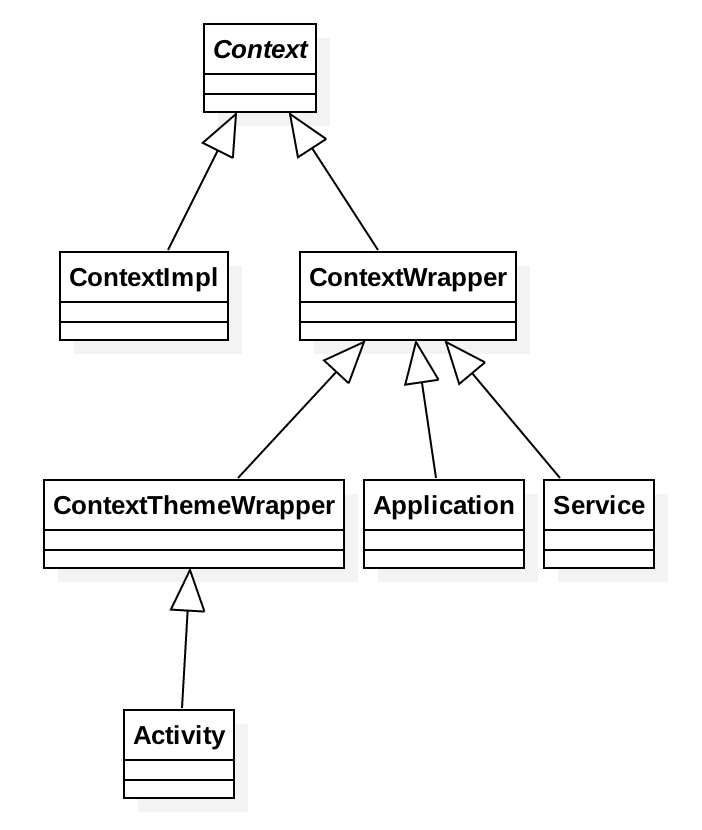Context 类结构图
(最常见的部分类)

Context 的用途
Activity、Service 和 BroadcastReceiver 等类并不像普通的 Java 对象 new 一个实例就能正常使用了,而是要有它们各自的上下文环境,即 Context。
它可以用于弹出 Toast、启动 Activity、启动 Service、发送广播、操作数据库等。
Context 的分类
由文首的图可知,Context 分为 Activity、Service 和 Application 三类。
一般情况下它们可以通用,例外情况:
启动 Activity 时,因为 Activity 需要有任务栈,一般需要 Activity 类型的 Context,如果使用 Application 或 Service 类型的 Context,需要 FLAG_ACTIVITY_NEW_TASK。
android.util.AndroidRuntimeException: Calling startActivity() from outside of an Activity context requires the FLAG_ACTIVITY_NEW_TASK flag.Dialog 必须在 Activity 上面弹出(除非是 System Alert 类型),此时只能使用 Activity 类型的 Context。
Layout Inflation 推荐使用 Activity 类型的 Context。
如下图:
| Context 类型 | Application | Activity | Service |
|---|---|---|---|
| Show a Dialog | No | Yes | No |
| Start an Activity | 不推荐 | Yes | 不推荐 |
| Layout Inflation | 不推荐 | Yes | 不推荐 |
| Start a Service | Yes | Yes | Yes |
| Send a Broadcast | Yes | Yes | Yes |
| Register Broadcast Receiver | Yes | Yes | Yes |
| Load Resource Values | Yes | Yes | Yes |
与 UI 相关的应优先使用 Activity 类型的 Context 处理,其它可通用。
防止内存泄漏
在 Application 类型 Context 满足需求的情况下,优先使用它。
不要让生命周期长于 Activity 的对象持有 Activity 的引用。
尽量不要在 Activity 中使用非静态内部类,因为非静态内部类会隐式持有外部类实例的引用,如果使用静态内部类,将外部实例引用作为弱引用持有。
参考
文档信息
- 本文作者:王玉镇wangyuzhen
- 本文链接:https://wangyuzhen666.github.io//wiki/android-context/
- 版权声明:Creative Commons 4.0 传播此文章时,您需要遵守知识共享协议。 署名(BY)&非商业性(NC)&相同方式共享(SA)------------------------------- When disseminating this article, you need to adhere to a Creative Commons license. Attribution (BY) & Non-Commercial (NC) & Shareby Manner (SA) .(Creative Commons 4.0)
